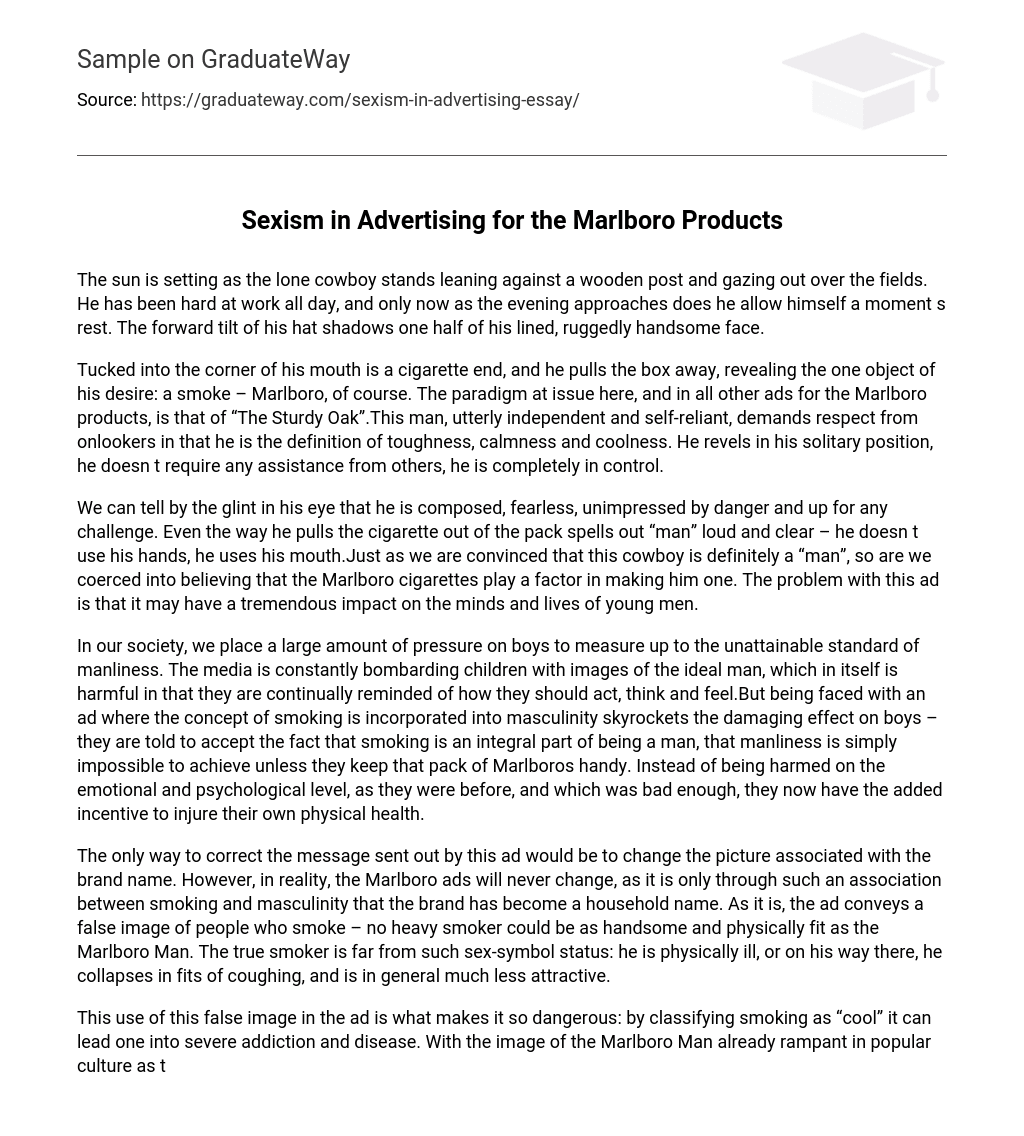As the evening approaches, the solitary cowboy rests against a wooden post and surveys the fields as the sun sets behind him. Following a day of laborious toil, he finally grants himself a brief respite. His hat angles forward, casting a shadow over one side of his weathered yet attractive face.
In the corner of his mouth is a cigarette end, and he uncovers the box to reveal his desired object: a Marlboro smoke. The recurring theme in all Marlboro product ads is “The Sturdy Oak”. This man represents toughness, calmness, and coolness, commanding respect from observers. He takes pleasure in his independence, relying on no one else and displaying absolute control.
The advertisement showcases the man’s qualities of composure, fearlessness, indifference to danger, and preparedness for challenges through his gaze. His masculinity is accentuated by the act of retrieving a cigarette from the pack using only his mouth. Both the cowboy figure and Marlboro cigarettes contribute to enhancing his manliness. However, it is important to consider that this advertisement has the potential to significantly impact the thoughts and lifestyles of young men.
Societal pressure on boys to conform to an unrealistic standard of manliness is significant. The media continually exposes children to images of the perfect man, which is damaging because it consistently dictates their behavior, thoughts, and emotions. However, the negative impact on boys becomes more severe when they come across an advertisement that associates smoking with masculinity. They are informed that they must embrace smoking as a vital aspect of manhood and that true embodiment of manliness is impossible without having a pack of Marlboros nearby. This not only causes emotional and psychological harm as before but also creates a stronger incentive for them to compromise their physical health.
The ad’s message could only be corrected by replacing the brand name’s picture. However, Marlboro ads will never change because the brand has become famous for its connection between smoking and masculinity. Presently, the ad portrays an inaccurate image of smokers – no dedicated smoker could be as good-looking and physically fit as the Marlboro Man. The actual smoker is quite different from this sex-symbol status: they suffer from physical illness or are on the verge of it, experience frequent coughing fits, and are generally less appealing.
Using this misleading image in the advertisement is what makes it extremely hazardous: by promoting smoking as something fashionable or desirable, it can easily lead individuals towards addiction and serious health issues. Considering that the Marlboro Man is already widely accepted in popular culture as the epitome of masculinity, we can only hope that boys understand the distorted nature of this ideal and reject it entirely. It is the responsibility of society as a whole to expand the concept of manliness to incorporate more commendable role models, guaranteeing the healthy transition of boys into manhood.





